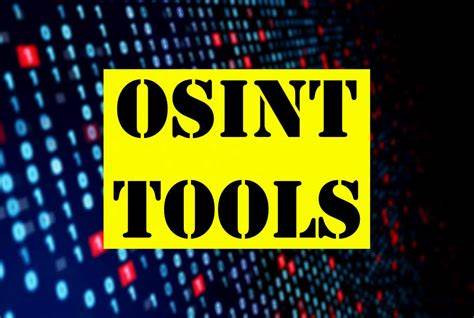Osint Geolocation Challenge: Unlocking Intelligence Insights with Knowlesys
In the rapidly evolving world of open-source intelligence (OSINT), geolocation analysis has emerged as a critical tool for intelligence professionals in the United States and the Middle East. From tracking terrorist activities to monitoring geopolitical developments, the ability to pinpoint locations using publicly available data is transforming how intelligence is gathered and analyzed. Companies like Knowlesys, a leader in OSINT monitoring systems, are at the forefront of empowering agencies with cutting-edge solutions to tackle these challenges.
The Growing Importance of Geolocation in OSINT
Geolocation in OSINT involves using open-source data—such as social media posts, satellite imagery, and public records—to identify the precise location of an event, individual, or asset. This capability is particularly valuable in regions like the Middle East, where political instability and security threats demand real-time, accurate intelligence. For example, analysts can use geolocation to verify the location of a reported incident or track the movements of key figures by analyzing metadata from images or videos shared online.
In the United States, geolocation is equally critical for national security and law enforcement. Agencies rely on OSINT to monitor domestic threats, such as extremist groups, while also keeping an eye on international developments. The challenge lies in sifting through vast amounts of data to extract actionable insights—a task that Knowlesys’s advanced OSINT platforms are designed to streamline.
Key Challenges in OSINT Geolocation
Despite its potential, OSINT geolocation comes with significant hurdles. Intelligence professionals must navigate issues such as:
- Data Overload: The sheer volume of open-source data, from X posts to satellite feeds, can overwhelm analysts without proper tools.
- Accuracy and Verification: Misinformation and manipulated images can lead to incorrect conclusions, making verification critical.
- Privacy and Ethics: Balancing intelligence needs with privacy concerns, especially in democratic societies, is a growing challenge.
- Regional Nuances: In the Middle East, cultural and linguistic diversity adds complexity to analyzing local sources, requiring specialized expertise.
Knowlesys addresses these challenges by offering AI-driven OSINT tools that automate data collection, filter noise, and provide verified geolocation insights. Their platforms enable analysts to focus on high-value tasks, such as interpreting data and making strategic decisions.
How Knowlesys Empowers Geolocation Analysis
Knowlesys’s OSINT monitoring systems are tailored to meet the needs of intelligence communities in both the U.S. and the Middle East. By integrating advanced technologies like machine learning and natural language processing, Knowlesys enables analysts to:
- Automate Data Collection: Pull real-time data from diverse sources, including social media platforms like X, news outlets, and public databases.
- Enhance Geolocation Accuracy: Use metadata analysis and image recognition to pinpoint locations with high precision.
- Support Multilingual Analysis: Process data in languages such as Arabic, Farsi, and Hebrew, critical for Middle Eastern intelligence operations.
- Ensure Compliance: Adhere to ethical and legal standards, addressing privacy concerns in data collection.
For instance, in a recent case, Knowlesys’s tools helped an intelligence agency verify the location of a suspected militant hideout in a conflict zone by analyzing geotagged social media posts and cross-referencing them with satellite imagery. This kind of precision is invaluable for both tactical operations and long-term strategic planning.
Geolocation in Action: U.S. and Middle East Case Studies
In the U.S., OSINT geolocation has been pivotal in counterterrorism efforts. Agencies have used tools like those provided by Knowlesys to track domestic extremist groups by analyzing their online activity, such as recruitment posts on X or public event announcements. By geolocating these activities, authorities can preempt potential threats.
In the Middle East, geolocation is often used to monitor conflict zones. For example, analysts can use Knowlesys’s platforms to track the movement of military assets or verify claims of ceasefire violations by analyzing videos uploaded to social media. These insights are critical for both regional governments and international coalitions operating in the region.
The Future of OSINT Geolocation
As technology advances, the role of geolocation in OSINT will only grow. Emerging trends, such as the integration of augmented reality and blockchain for data verification, promise to enhance the accuracy and reliability of geolocation analysis. However, staying ahead of adversaries who also leverage open-source data will require continuous innovation.
Knowlesys is committed to leading this charge by developing next-generation OSINT tools that anticipate the needs of intelligence professionals. Their focus on AI, real-time analytics, and user-friendly interfaces ensures that agencies can tackle the geolocation challenge with confidence.
Conclusion
The OSINT geolocation challenge is both an opportunity and a necessity for intelligence communities in the U.S. and the Middle East. By harnessing the power of open-source data, analysts can uncover critical insights that drive security and stability. With Knowlesys as a partner, intelligence professionals have access to the tools they need to navigate this complex landscape, turning raw data into actionable intelligence. As the field evolves, Knowlesys remains a trusted ally in unlocking the full potential of OSINT geolocation.
